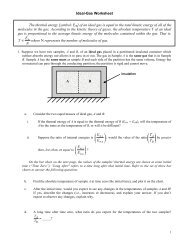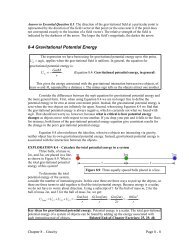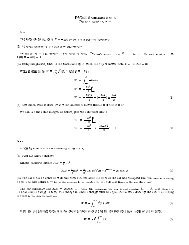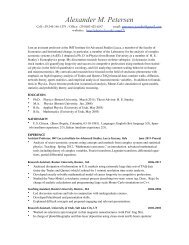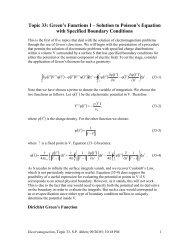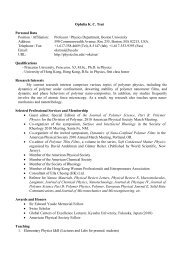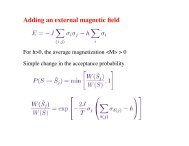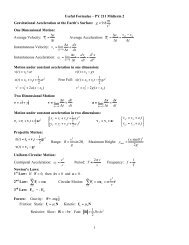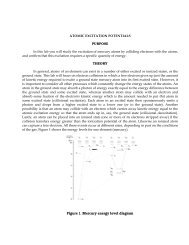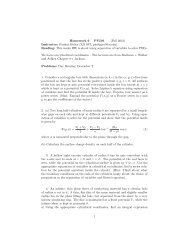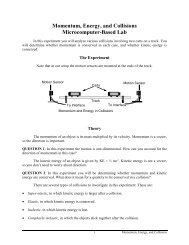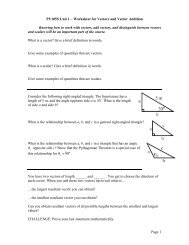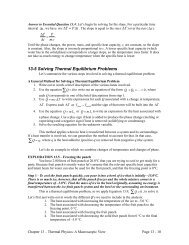Crystal Structure 1 3.1 Some Basic Concepts of Crystal Structure ...
Crystal Structure 1 3.1 Some Basic Concepts of Crystal Structure ...
Crystal Structure 1 3.1 Some Basic Concepts of Crystal Structure ...
You also want an ePaper? Increase the reach of your titles
YUMPU automatically turns print PDFs into web optimized ePapers that Google loves.
<strong>Crystal</strong> <strong>Structure</strong><br />
3.3 Kinematic Theory <strong>of</strong> Scattering<br />
r<br />
dV<br />
<br />
k<br />
k’<br />
Incident beam<br />
e ik·r<br />
kr<br />
|k|<br />
k’r<br />
|k’|<br />
Outgoing beam<br />
e ik’·r<br />
r<br />
k<br />
k’<br />
Fig. 3.26<br />
(from Kittel)<br />
The Bragg law only provides a condition for diffraction to occur. We need a deeper<br />
analysis to determine the scattering intensity from the basis <strong>of</strong> atoms.<br />
Consider an incoming x-ray with wavevector k. We want to calculate the<br />
scattering intensity in the direction along k’ due to a crystal (Fig. 3.26). First, we notice<br />
that waves scattered from different points <strong>of</strong> the specimen emerge with different path<br />
lengths from the wave scattered from the origin. For the wave scattered from a point at r,<br />
the path length difference between this emergent wave and that from the origin is<br />
(/2)(kk’)r. This leads to an extra phase factor <strong>of</strong> exp[i(kk’)r] in the wave scattered<br />
from point r compared to that scattered from the origin. Since the amplitude <strong>of</strong> the wave<br />
scattered from a volume element is proportional to the local electron concentration, n(r),<br />
the total amplitude <strong>of</strong> the scattered wave in the direction <strong>of</strong> k’ is proportional to the<br />
integral over the crystal <strong>of</strong> n(r)dV times the phase factor exp[i(kk’)r]. In other words,<br />
the amplitude <strong>of</strong> the electric or magnetic field vectors in the scattered electromagnetic<br />
wave is proportional to the following integral which defines the scattering amplitude, F:<br />
F = dV n(r) exp[i(kk’)r] = dV n(r) exp[ikr], (<strong>3.1</strong>1)<br />
where k = k’ k (<strong>3.1</strong>2)<br />
20



![arXiv:1303.7274v2 [physics.soc-ph] 27 Aug 2013 - Boston University ...](https://img.yumpu.com/51679664/1/190x245/arxiv13037274v2-physicssoc-ph-27-aug-2013-boston-university-.jpg?quality=85)
